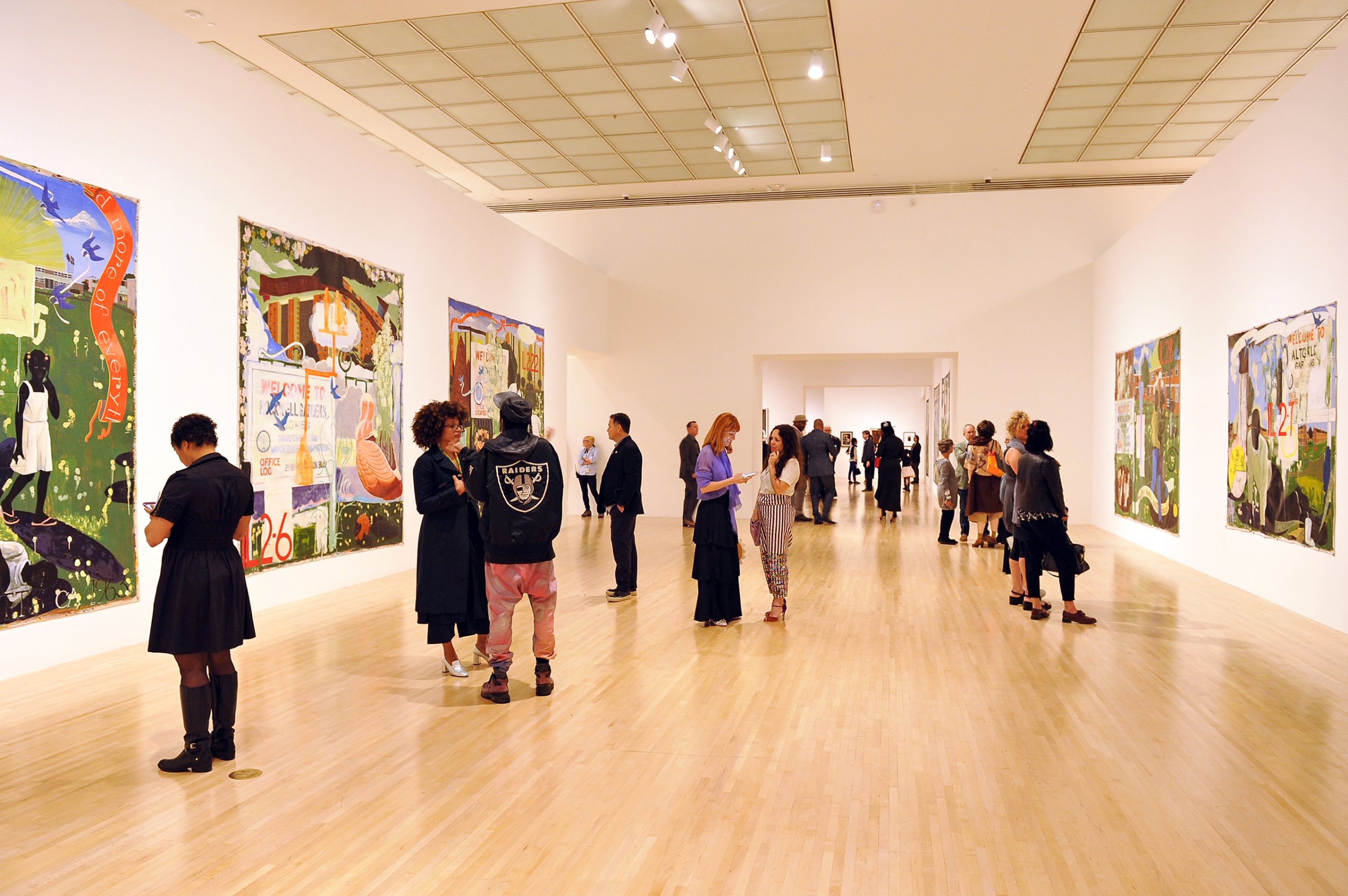
Imagine a 15-year-old girl exiting the current Kerry James Marshall retrospective at Museum of Contemporary Art Los Angeles. She’s from Compton, or maybe South L.A. or MacArthur Park. Maybe it’s her first time visiting MOCA — or her hundredth.
She now wants to be an artist. She doesn’t know what that might mean just yet, but she can’t deny the overwhelming emotion she feels about her favorite films or songs or photographs or paintings. And on this day, buoyed with the inspiration Marshall has given thousands of others, she will finally apply to a local community-based arts program in her neighborhood.
But something isn’t quite right. At the publicly funded arts program, a worker hands her a clipboard with mandatory application questions: Have you ever witnessed violence in your home? Have you struggled with an eating disorder? Do you have trouble learning in school? Do you engage in any harmful or dangerous activities in or outside of school?
She isn’t sure what these questions have to do with art. She’s confused and disappointed — and maybe just a little insulted.
The President has proposed to defund the National Endowment for the Arts (NEA). There is no denying it must be saved. But re-directing and depleting our country’s funding for the arts leaves so much more at stake than the closing of a gallery or finding alternative supporters for veterans’ art therapy, which, by the way, could be picked up by the Department of State, Justice and Homeland Security who already spend more on “art programs” than the NEA. It will also compound the problems posed by already shrinking budgets for arts programs and the trend of social outcome–driven funding that have all but eliminated community organizations that truly support creativity and young emerging artists — particularly if the participants are black and Latino. That fifteen-year-old girl may soon have nowhere to go.
At the same time, we also must take this opportunity to address that clipboard of questions.
While most community arts programs for underserved youth were planned by caring, well-intentioned organizers, they are doing serious harm. They are designed to mitigate risk — to treat participants not as creative talent full of ideas and possibility, but as disadvantaged youth or, worse, cautionary tales in the making. Their target outcomes are preventing violence or pregnancy, lowering obesity rates or other deficits attached to their community’s identity — not to prepare our country for a future of innovation and economic participation. This must change.
In these programs, there is very little attention, if any, given to craft, brush-stroke technique or a student’s worldview as an artist. This reinforces the idea that their reality is unchangeable and inescapable. The students learn not to test new boundaries but to live within the limits set for them.
A true arts education gives young people the life skills that can drive universal change. Person by person, creative thinkers armed with hope and expanded options can re-shape communities. This doesn’t happen overnight. It’s a long process that builds agency comprised of hard work, purpose, intention and motivation. That kind of art-making allows us a view into the complexity of others in explicit and implicit contexts. The process of making allows us to discover many answers to a single question.
We must fix the rhetoric around art, which is once again being set aside as an afterthought — an extra-curricular activity, something only practiced and experienced by the elite. Yet this so-called afterthought activity is deeply entwined in our DNA and our history. In fact, the greatest enduring American export is the fruits of our creativity, which can never be outsourced or built elsewhere.
This change in narrative about our country’s arts education would lead to more diverse artists. But more importantly, it would shape class after class of creative thinkers who know that reality can be reimagined and that limits can be tested.
Conservationist John Muir rightly said we need both bread and beauty; it is inherently problematic to position one against the other. It’s a fact: to live a full human life one needs art and culture. And in a heated political climate, it’s easy to be discouraged.
The key is to focus. Focus on that 15-year old girl in Los Angeles, that girl looking to be challenged. As long as we fight to keep her access to the arts available and authentic, she will learn to trust her own vision for future change with the confidence and skill to pursue it. And she will find answers to questions that we — her parents, teachers, America — cannot yet imagine.
More Must-Reads from TIME
- Cybersecurity Experts Are Sounding the Alarm on DOGE
- Meet the 2025 Women of the Year
- The Harsh Truth About Disability Inclusion
- Why Do More Young Adults Have Cancer?
- Colman Domingo Leads With Radical Love
- How to Get Better at Doing Things Alone
- Michelle Zauner Stares Down the Darkness
Contact us at letters@time.com